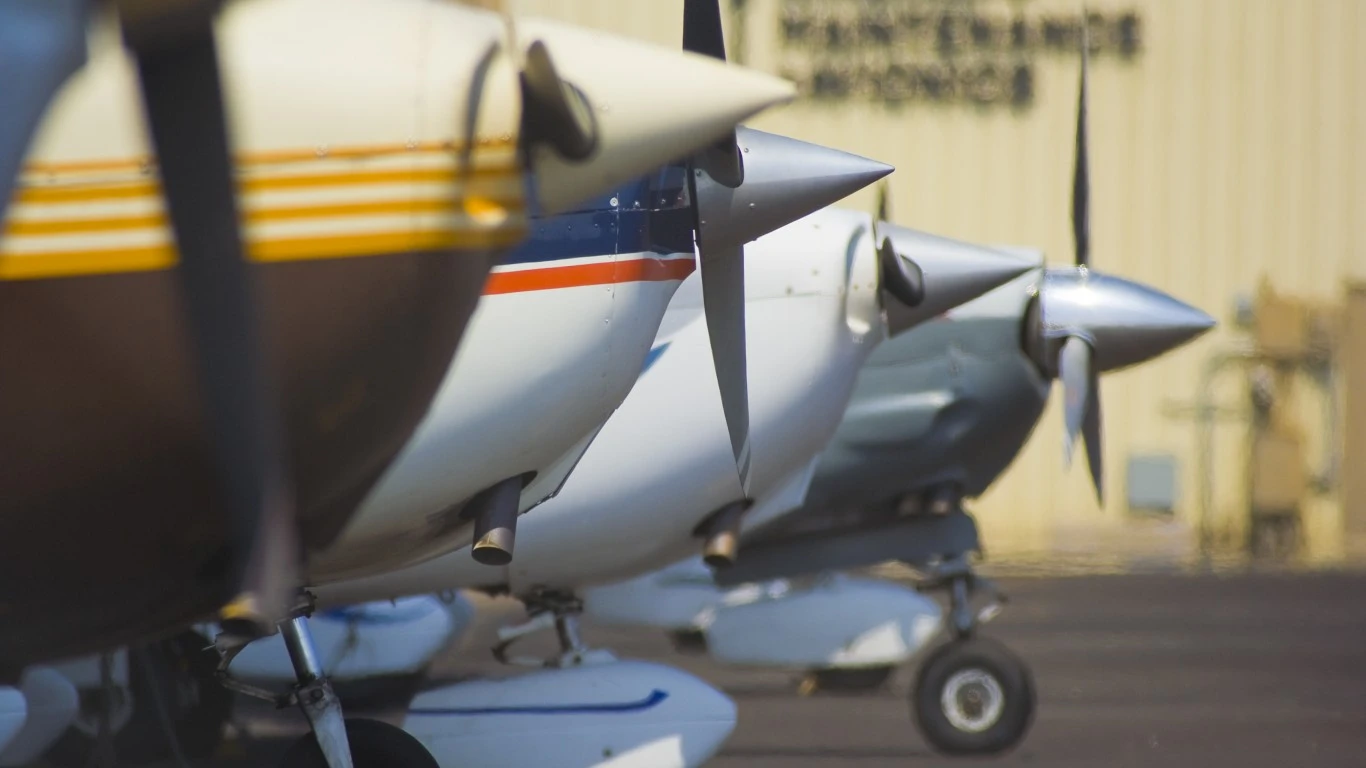
The U.S. banned leaded gasoline for cars in 1996 with the Clean Air Act as a way to protect Americans from harmful lead poisoning. Yet tens of thousands of Americans are still exposed to the harmful byproducts of such fuels each year, because leaded fuel is still used in some piston-engine airplanes – more than 170,000 of them, according to climate activist group Earthjustice.
Piston-engine planes are typically smaller aircraft with a propeller on the front, fitting just a few passengers. Such planes often fly out of smaller regional airports, as opposed to larger commercial planes used by most passengers. (Such planes are unlikely to fly out of the biggest airports in the world.)
These planes account for the vast majority of the lead released into the American atmosphere – thousands of pounds of it annually, particularly near airport – causing potentially harmful effects to the people living nearby.
To determine the airports with the most dangerous air, 24/7 Tempo reviewed an Earthjustice analysis of data from the Environmental Protection Agency on the airports with the most total lead emissions over the last year.
Click here to see the U.S. airports with the most dangerous air
A recent study found that children living within a half mile of a local airport had significantly higher lead levels in their blood than those who lived farther away. There is no known safe quantity of lead. Children who are exposed to lead may suffer lowered cognitive function, antisocial behavior, and other severe neurological effects, according to the World Health Organization.
Most of the 30 airports with the highest total lead emissions are in Western states like California, Arizona, Colorado, and Washington. These airports, though smaller, are often near major cities, and their emissions contribute to bad air quality in places like Phoenix, San Diego, and Los Angeles. (These are America’s dirtiest cities.)





